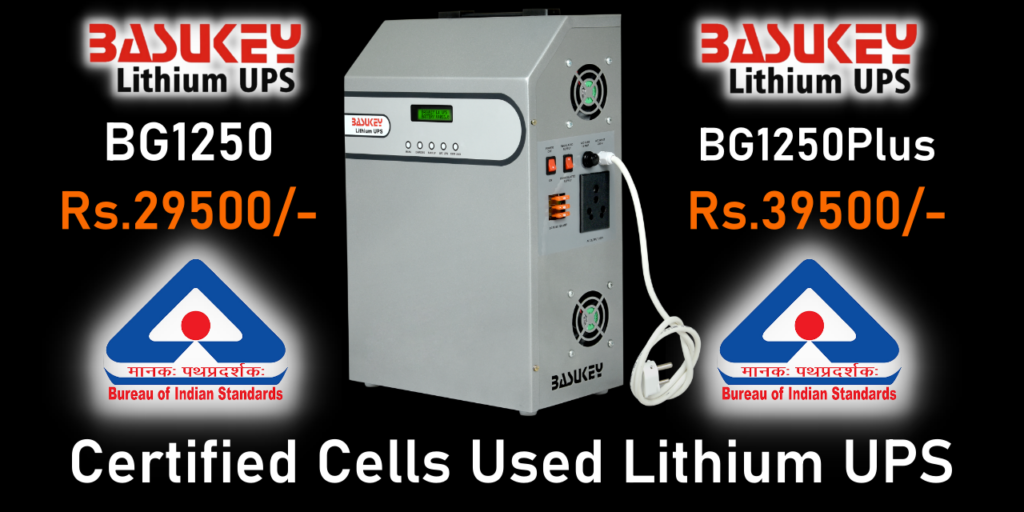The Cost-Benefit Analysis of Switching to Lithium UPS
The Cost-Benefit Analysis of Switching to Lithium UPS. In an era where uninterrupted power supply is crucial for homes, businesses, and industries, choosing the right backup system can significantly impact efficiency, reliability, and long-term costs. While traditional lead-acid battery-based Uninterruptible Power Supply (UPS) systems have been the go-to solution for decades, Lithium UPS systems are gaining traction due to their superior performance and cost-effectiveness over time. This article explores the cost-benefit analysis of switching to a Lithium UPS, helping consumers and businesses make an informed investment decision.
Understanding the Upfront Costs
One of the most significant factors that deter users from switching to Lithium UPS is the higher initial investment compared to traditional lead-acid UPS systems.
1. Initial Purchase Cost
- Lead-Acid UPS: Typically costs 30-50% less than a lithium-based UPS for the same capacity.
- Lithium UPS: The upfront cost is higher due to advanced battery chemistry, integrated smart management systems, and longer lifespans.

2. Installation and Space Requirements
- Lead-Acid UPS: Requires dedicated ventilation and a larger installation footprint.
- Lithium UPS: More compact and lightweight, reducing installation complexity and space requirements.
While the initial cost of lithium UPS is higher, its long-term financial advantages often outweigh the upfront investment.
Operational and Maintenance Costs
Switching to Lithium UPS significantly reduces operational and maintenance costs over time.
1. Lifespan and Replacement Costs
- Lead-Acid Batteries: Typically last 3-5 years, requiring frequent replacements.
- Lithium-Ion Batteries: Offer a lifespan of 8-10 years or more, reducing the need for replacements.
The extended battery life alone results in 50-70% savings in replacement costs over a decade.
2. Charging Efficiency and Energy Consumption
- Lead-Acid Batteries: Take longer to charge (8-10 hours), leading to energy inefficiencies.
- Lithium UPS: Charges 3-5 times faster, reducing energy losses and optimizing power usage.
Faster charging results in lower electricity bills and improved energy efficiency.
3. Maintenance Requirements
- Lead-Acid Batteries: Require periodic maintenance, including water refilling and corrosion checks.
- Lithium UPS: Maintenance-free, eliminating downtime and associated costs.
For businesses and industries, avoiding maintenance-related disruptions can translate into thousands of dollars in savings annually.
Performance and Productivity Gains
Beyond cost savings, switching to Lithium UPS also offers tangible benefits in performance and productivity.
1. Instantaneous Power Transition
- Unlike lead-acid UPS systems, which may have a slight switchover delay, lithium UPS provides seamless power backup.
- This feature is critical for data centers, medical equipment, and industrial processes, where even a brief interruption can cause significant losses.
2. Higher Energy Density and Space Savings
- Lithium-ion batteries store more energy in a smaller footprint, making them ideal for businesses with space constraints.
- Less weight also means reduced logistics and installation costs.
3. Sustainability and Environmental Impact
- Lead-acid batteries contribute significantly to toxic waste disposal issues.
- Lithium-ion batteries are more environmentally friendly, with an increasing number of recycling and repurposing programs emerging worldwide.
Switching to Lithium UPS supports corporate sustainability goals and helps businesses comply with green energy regulations.
Return on Investment (ROI): Is It Worth It?
While the initial cost of Lithium UPS is higher, a well-calculated Return on Investment (ROI) demonstrates that the switch pays for itself in the long run.
| Factor | Lead-Acid UPS | Lithium UPS |
|---|---|---|
| Upfront Cost | Lower | Higher |
| Lifespan | 3-5 years | 8-10+ years |
| Charging Speed | Slow (8-10 hours) | Fast (1-3 hours) |
| Efficiency | Moderate (energy loss) | High (minimal loss) |
| Maintenance Cost | High (frequent) | Low (maintenance-free) |
| Replacement Cost | Every 3-5 years | Once in 10 years |
| Total Cost Over 10 Years | Higher due to frequent replacements and maintenance | Lower due to durability and efficiency |
A business or homeowner investing in Lithium UPS can expect to break even within 4-6 years, with continued savings thereafter.
Conclusion: Making the Right Choice
Switching to Lithium UPS is a strategic, long-term investment that offers:
- Lower total cost of ownership over time.
- Enhanced efficiency and reliability.
- Minimal maintenance and higher sustainability.
For critical applications requiring uninterrupted power, the switch to lithium-based UPS is not just beneficial—it’s becoming a necessity. As battery technology advances and costs decline, Lithium UPS will soon become the industry standard for power backup solutions. If your goal is cost savings, operational efficiency, and long-term reliability, switching to a Lithium UPS is a decision worth making today.
